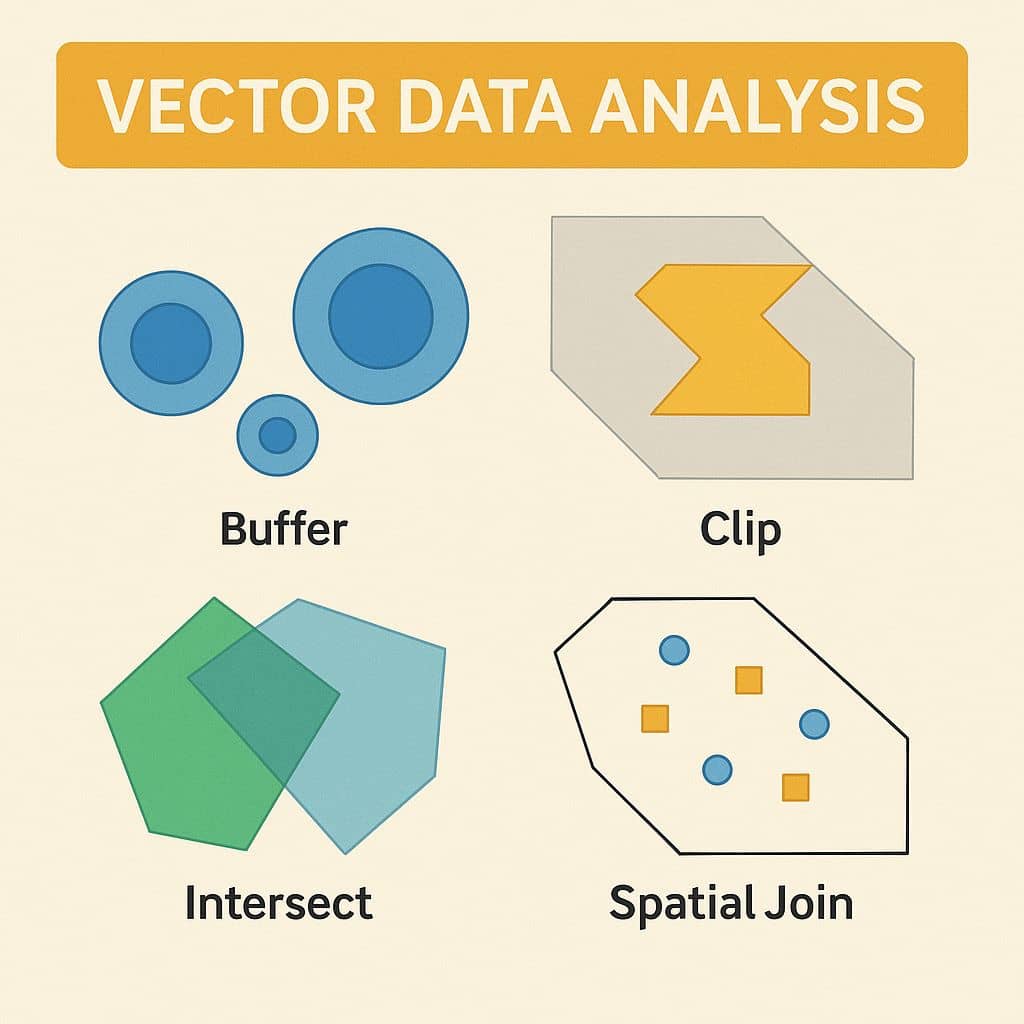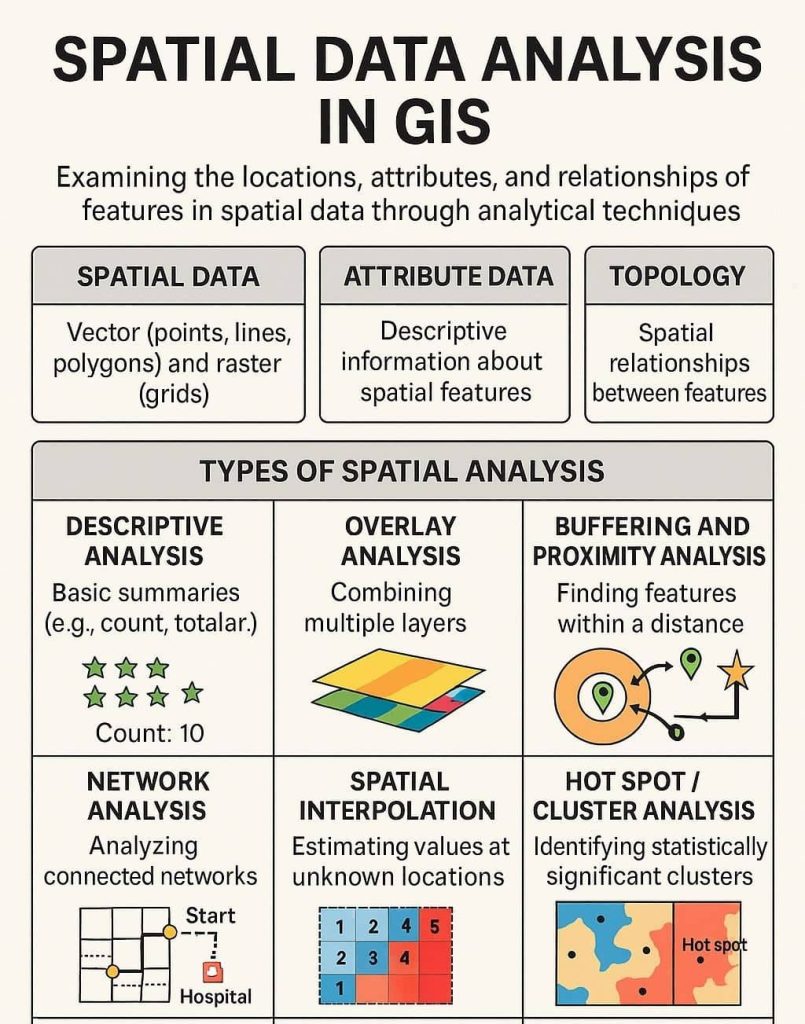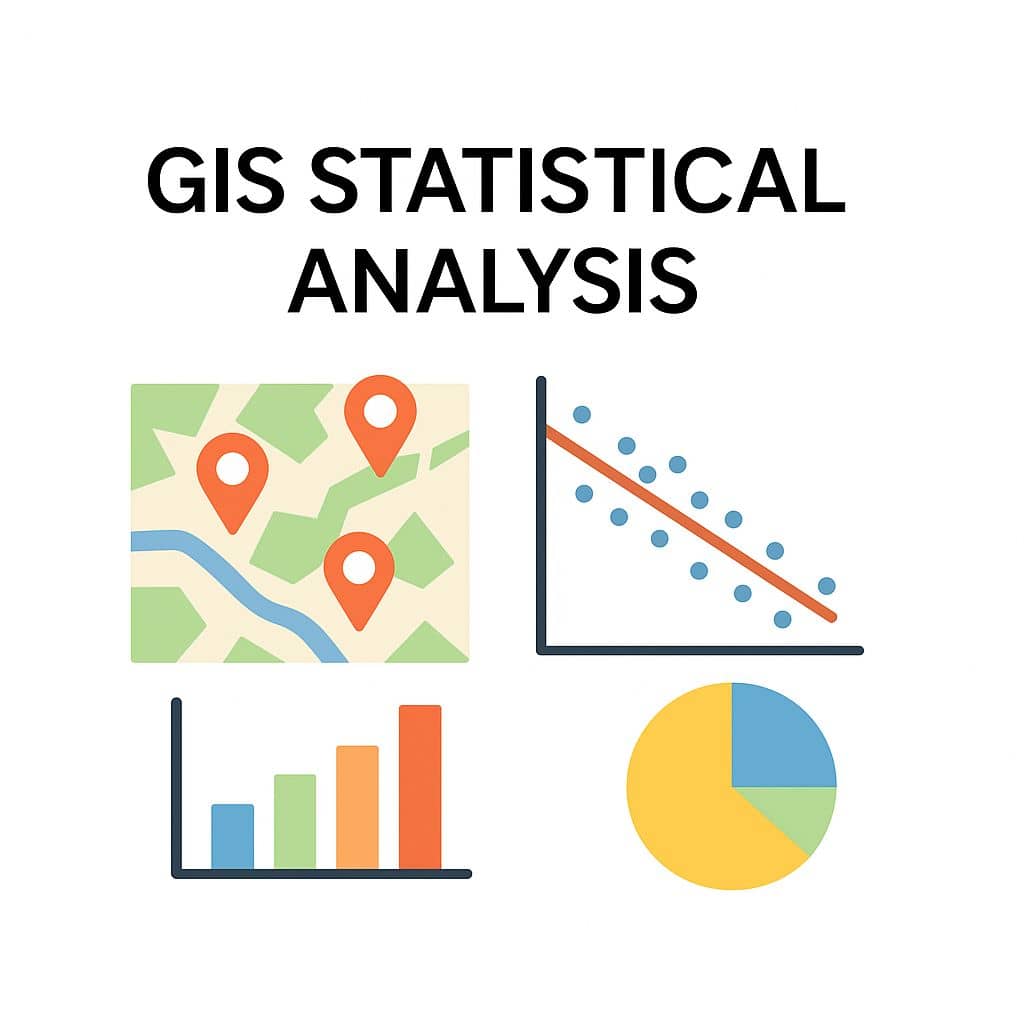Vector Data Analysis
Vector Data Analysis What is Vector Data Analysis? Vector data analysis is fundamental to GIS (Geographic Information Systems) for spatial querying, measurements, and geoprocessing. Vector data represents geographic features using points, lines, and polygons. Examples of Vector Data Analysis In this tutorial describe, three difference types of vector analysis; Vector Analysis Techniques Technique Description Buffer […]





